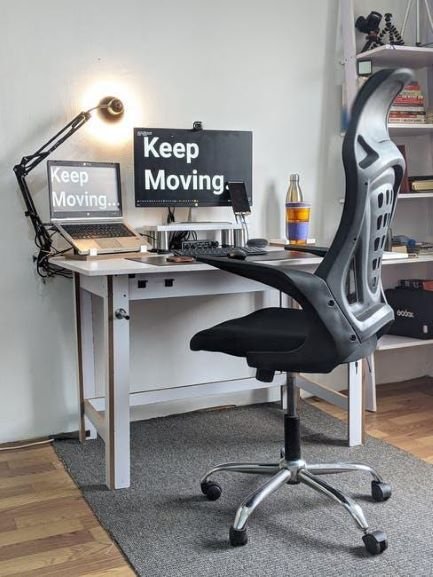
On account of global pandemics and quarantines, people across the world have needed to adjust to new realities. For many people, that means getting used to the idea of working from home. In fact, at one point in the year, 42% of the U.S. workforce worked from home.
But many homes lack an office setup that promotes health and comfort. So how can you go about creating the perfect space to Work Station from home?
Keep reading to learn about how to create an ergonomic workspace.
What Does Ergonomic Mean?
Although traditional desk setups are the norm, they often don’t provide you with comfort. In many cases, this can cause you to suffer injuries, which can in turn impact your productivity. You can also consider going for a butcher block desk.
On the other hand, ergonomic offices and products promote both efficiencies as well as comfort. This helps you dish out more work, without having to worry about injury or harm to your body while doing so.
To see some great examples of different ergonomic products, check out this company.
Head and Neck
Head and neck injuries are some of the most common work injury types. When you work at home, odds are that the surface you put your laptop on is too low. This causes you to flex your neck forward, in turn increasing your chances of straining something.
Proper desk posture dictates that you should align your head with your neck. To help you do that, consider investing in a laptop riser, as well as an external mouse and keyboard.
Hand and Wrist
Typing on a keyboard and using a mouse all day also increases your chances of experiencing an injury. As your head and neck, your hands and wrists should also be in neutral positions.
To achieve a neutral position, you may need to change the surface you work on. You can also purchase different ergonomic keyboards and mice. The goal is to avoid having a hinge at the wrist.
Back Support
Many people believe that when sitting, your back should be at a 90-degree angle. However, most ergonomic experts refute that belief, instead emphasizing the importance of lower back support.
For many people, this means sitting like they do in a car. If you don’t have a fancy desk chair, putting a blanket or pillow behind your lower back can help give you support.
Work Habits
Aside from posture and position, another important aspect of an ergonomic office is working the right way.
If you work for long periods of time, make sure that you take frequent breaks. Get up, stretch your muscles, and give your eyes a break from the screen. The movement will increase your circulation and help prevent injury.
Create an Ergonomic Workspace With These Tips
If COVID-19 has forced you to work from home, you may be struggling with staying comfortable and productive. Yet by following the tips mentioned in this guide, you’ll be able to create an ergonomic workspace that keeps you at your best.
Do you have any other tips on how to create an ergonomic office? Make sure to tell us in a comment down below.
If you enjoyed reading this article, don’t forget to check out some of our other blog posts to read more guides and tips.




